Ditapis dengan

Radiation Safety in the Use of Nuclear Gauges - Specific Safety Guide - IAEA …
There are several hundred thousand nuclear gauges incorporating a radioactive source or a radiation generator in use all over the world. They have been used in a wide range of industries to improve the quality of products, optimize processes, and save energy and materials. The economic benefits have been amply demonstrated, and there is clear evidence that nuclear gauge technology can be used s…
- Edisi
- -
- ISBN/ISSN
- 978-92-0-106019-8
- Deskripsi Fisik
- 97 hal, 1.19 MB
- Judul Seri
- -
- No. Panggil
- -
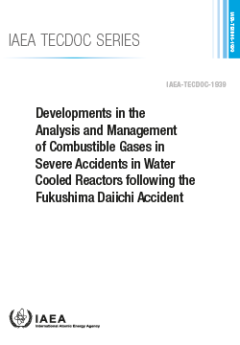
Developments in the Analysis and Management of Combustible Gases in Severe Ac…
Following the accident at the Fukushima Daiichi nuclear power plant, combustible gas behaviour and related accident management measures have been the subject of increased study and analysis. This has included on measures to limit the fission product release into the environment. This publication reviews the current state of technology regarding combustible gas related safety issues in water coo…
- Edisi
- -
- ISBN/ISSN
- 978-92-0-132020-9
- Deskripsi Fisik
- 78 Hal, 2.66 MB
- Judul Seri
- -
- No. Panggil
- -
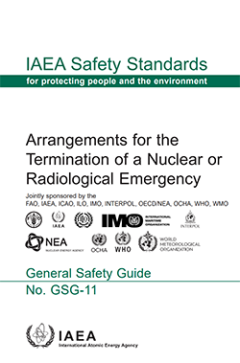
Arrangements for the Termination of a Nuclear or Radiological Emergency - IAE…
This publication provides guidance and recommendations on arrangements to be made at the preparedness stage, as part of overall emergency preparedness, for the termination of a nuclear or radiological emergency and the subsequent transition from the emergency exposure situation to either a planned exposure situation or an existing exposure situation. It elaborates the prerequisites that need to…
- Edisi
- -
- ISBN/ISSN
- 978-92-0-108017-2
- Deskripsi Fisik
- 189 page, 3.64MB
- Judul Seri
- -
- No. Panggil
- -
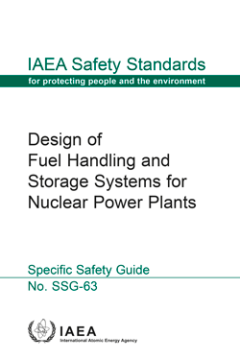
Design of Fuel Handling and Storage Systems for Nuclear Power Plants - IAEA S…
This Safety Guide provides recommendations on how to meet the requirements of IAEA Safety Standards Series No. SSR-2/1 (Rev. 1), Safety of Nuclear Power Plants: Design, in relation to fuel handling and storage systems. The publication addresses the design aspects of handling and storage systems for fuel that remain part of the operational activities of a nuclear reactor. It covers the following…
- Edisi
- -
- ISBN/ISSN
- 978-92-0-108519-1
- Deskripsi Fisik
- 53 pages, 134 MB
- Judul Seri
- -
- No. Panggil
- -
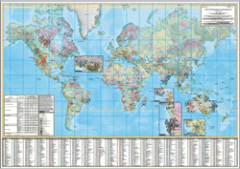
World Distribution of Thorium Deposits - Non-serial Publications
The World Distribution of Thorium Deposits map, at a scale of 1:35 000 000, is intended to be a snapshot of the IAEA ThDEPO database showing the broad distribution of thorium resources worldwide. The map displays the Thorium deposit-type classification system and deposit size ranges, and includes interactive querying and layer capability in the Adobe PDF version.
- Edisi
- -
- ISBN/ISSN
- 978-92-0-132220-3
- Deskripsi Fisik
- -
- Judul Seri
- -
- No. Panggil
- -
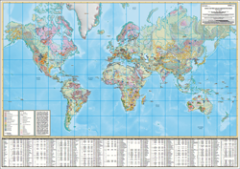
World Distribution of Uranium Provinces - STI/PUB/1929
Uranium resources occur as clusters within geologically permissive zones, known as 'uranium provinces', where the majority of future discoveries are likely to be made. Additional discoveries may be made in uranium provinces where the geology is favourable but there are yet no known deposits. The World Distribution of Uranium Provinces map, at a scale of 1:35 000 000, shows the broad distributio…
- Edisi
- -
- ISBN/ISSN
- 978-92-0-132420-7
- Deskripsi Fisik
- 1 Hal
- Judul Seri
- -
- No. Panggil
- -
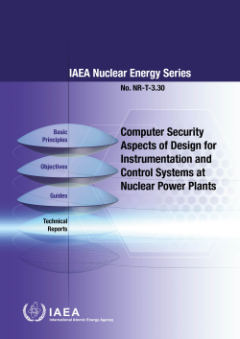
Computer Security Aspects of Design for Instrumentation and Control Systems a…
The transition to digital technology has changed the nature of instrumentation and control (l&C) systems by enabling extensive interconnection of reprogrammable, functionally interdependent I&C systems. This development has made computer security a necessary element for consideration in I&C system design. The benefits and challenges of the various computer security methods and controls with the…
- Edisi
- -
- ISBN/ISSN
- 978-92-0-104919-3
- Deskripsi Fisik
- 57 Pages
- Judul Seri
- -
- No. Panggil
- -
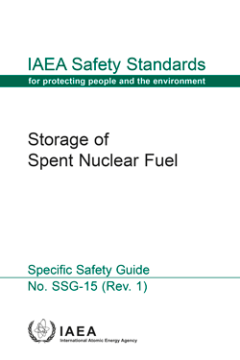
Storage of Spent Nuclear Fuel - IAEA Safety Standards Series No. SSG-15 (Rev. 1)
This publication is a revision by amendment of IAEA Safety Standards Series No. SSG-15 and provides recommendations and guidance on the storage of spent nuclear fuel. It covers all types of storage facility and all types of spent fuel from nuclear power plants and research reactors. It takes into consideration the longer storage periods beyond the original design lifetime of the storage facilit…
- Edisi
- -
- ISBN/ISSN
- 978-92-0-106119-5
- Deskripsi Fisik
- 130 pages, 1.48MB
- Judul Seri
- -
- No. Panggil
- -
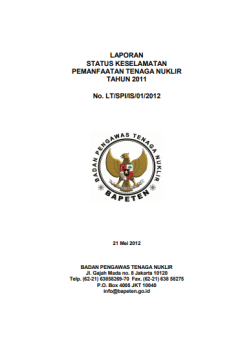
Laporan Status Keselamatan Pemanfaatan Tenaga Nuklir Tahun 2011
Laporan Keselamatan Nuklir ini disusun berdasarkan hasil pelaksanaan pengawasan pemanfaatan tenaga nuklir dari hasil inspeksi terhadap faktor keselamatan, keamanan dan seifgards. Inspeksi tersebut dilaksanakan oleh para Inspektur Keselamatan Nuklir BAPETEN sesuai dengan Pakta Integritas yang telah ditandatangani untuk melaksanakan inspeksi dengan benar, seksama, penuh tanggungjawab, serta menja…
- Edisi
- -
- ISBN/ISSN
- -
- Deskripsi Fisik
- 75 hal
- Judul Seri
- -
- No. Panggil
- -
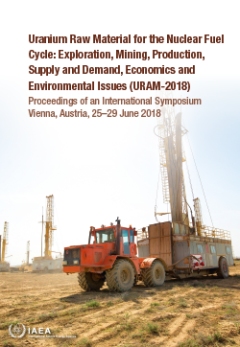
Uranium Raw Material for the Nuclear Fuel Cycle: Exploration, Mining, Product…
In response to a challenging economic environment, the industry is currently seeking new and innovative ways to improve efficiencies in producing uranium. Continued interest in developing uranium resources in a safe and sustainable manner led to this symposium being convened. This publication presents the proceedings. In continuation of the topics at previous symposia on uranium production and …
- Edisi
- -
- ISBN/ISSN
- 978-92-0-130620-3
- Deskripsi Fisik
- 92 pages, 2.0 MB
- Judul Seri
- -
- No. Panggil
- -
 Karya Umum
Karya Umum  Filsafat
Filsafat  Agama
Agama  Ilmu-ilmu Sosial
Ilmu-ilmu Sosial  Bahasa
Bahasa  Ilmu-ilmu Murni
Ilmu-ilmu Murni 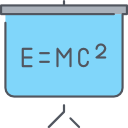 Ilmu-ilmu Terapan
Ilmu-ilmu Terapan  Kesenian, Hiburan, dan Olahraga
Kesenian, Hiburan, dan Olahraga  Kesusastraan
Kesusastraan  Geografi dan Sejarah
Geografi dan Sejarah